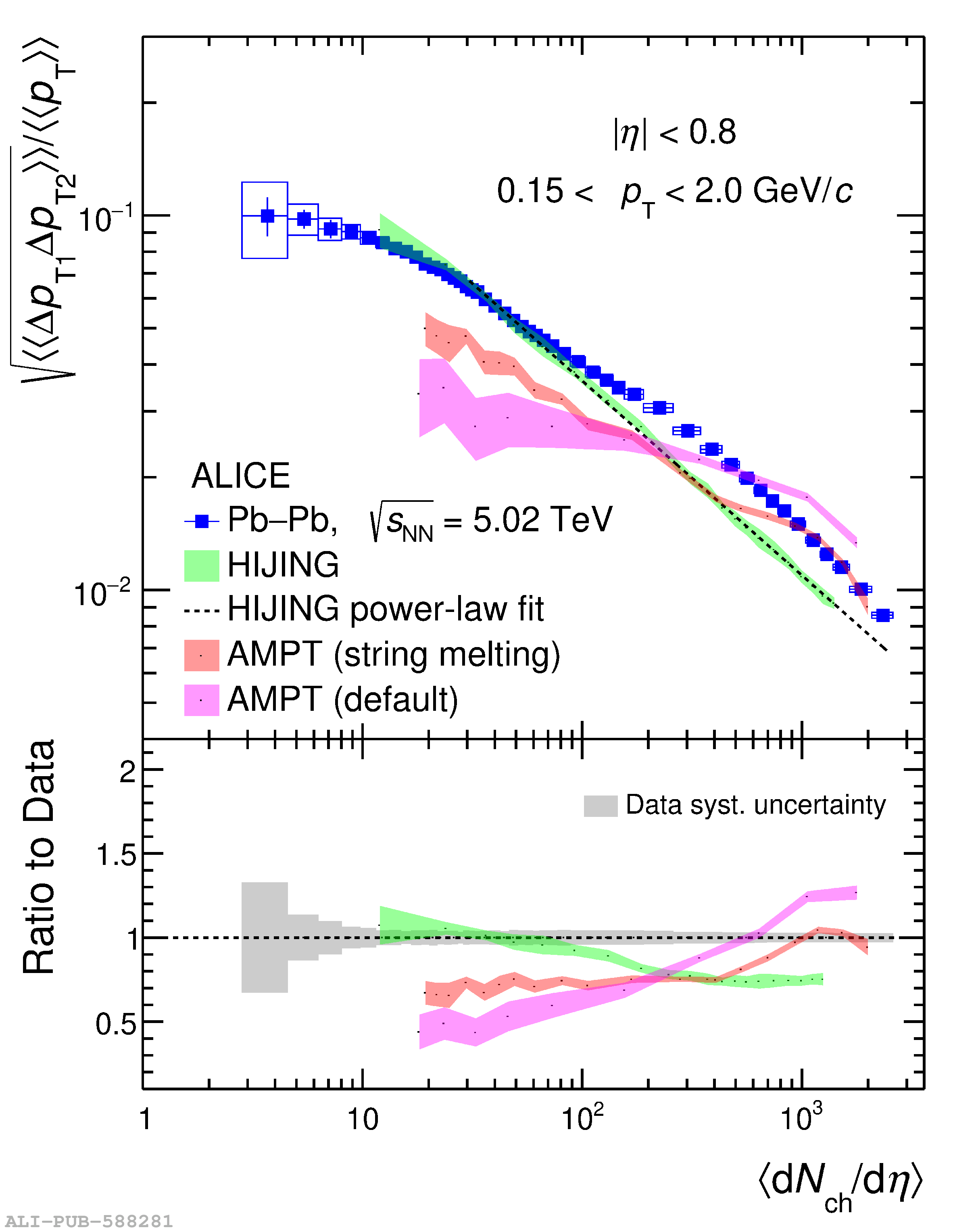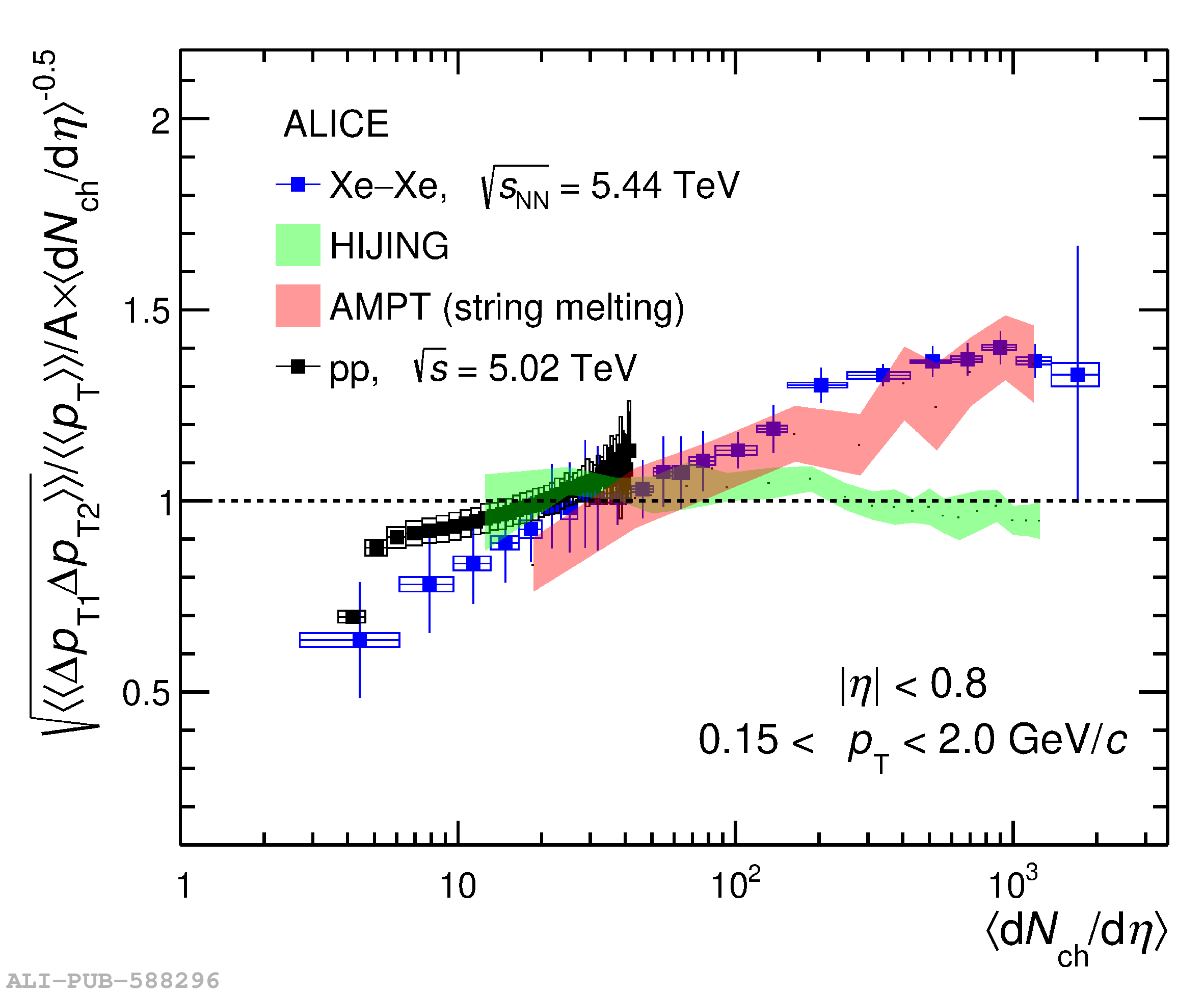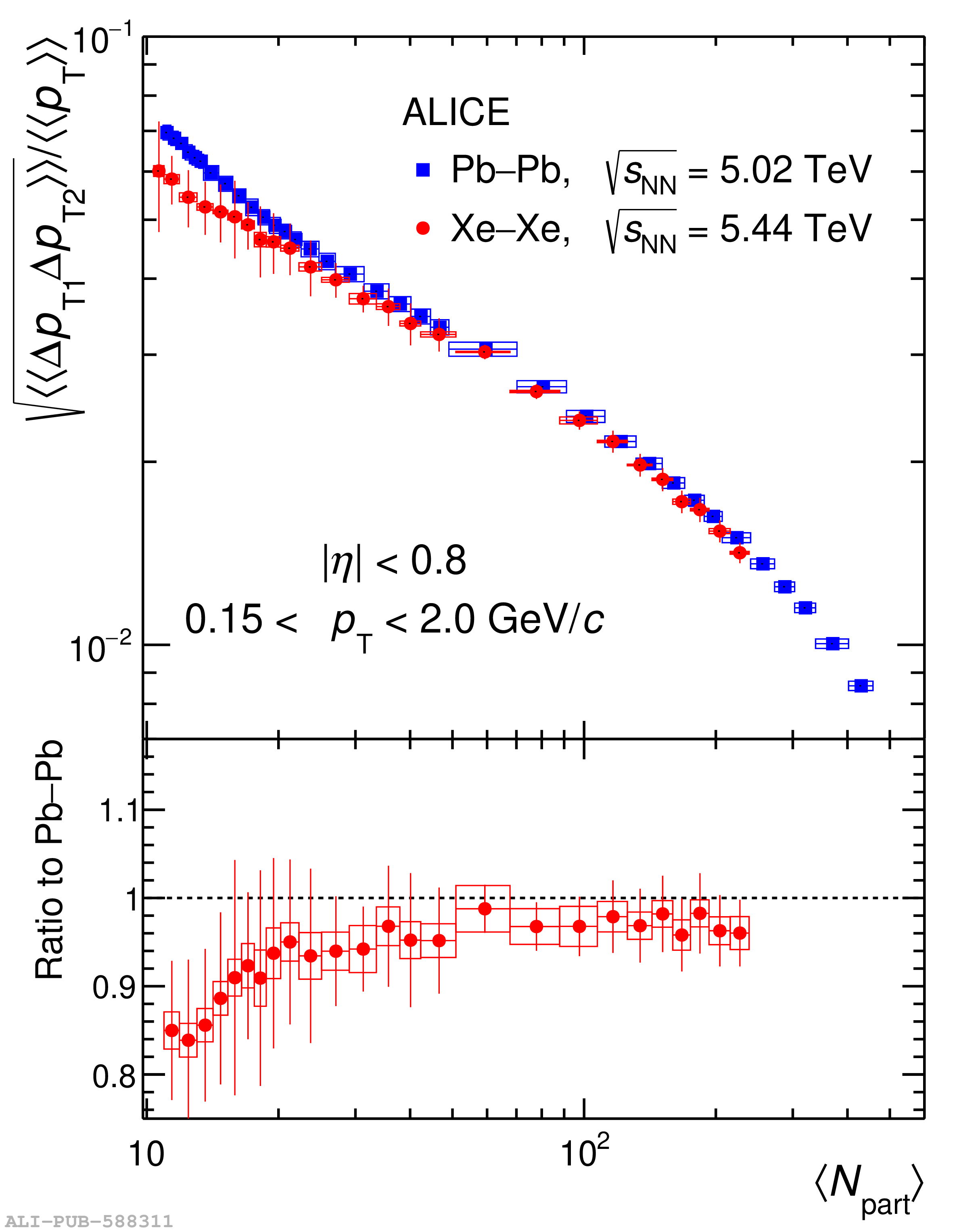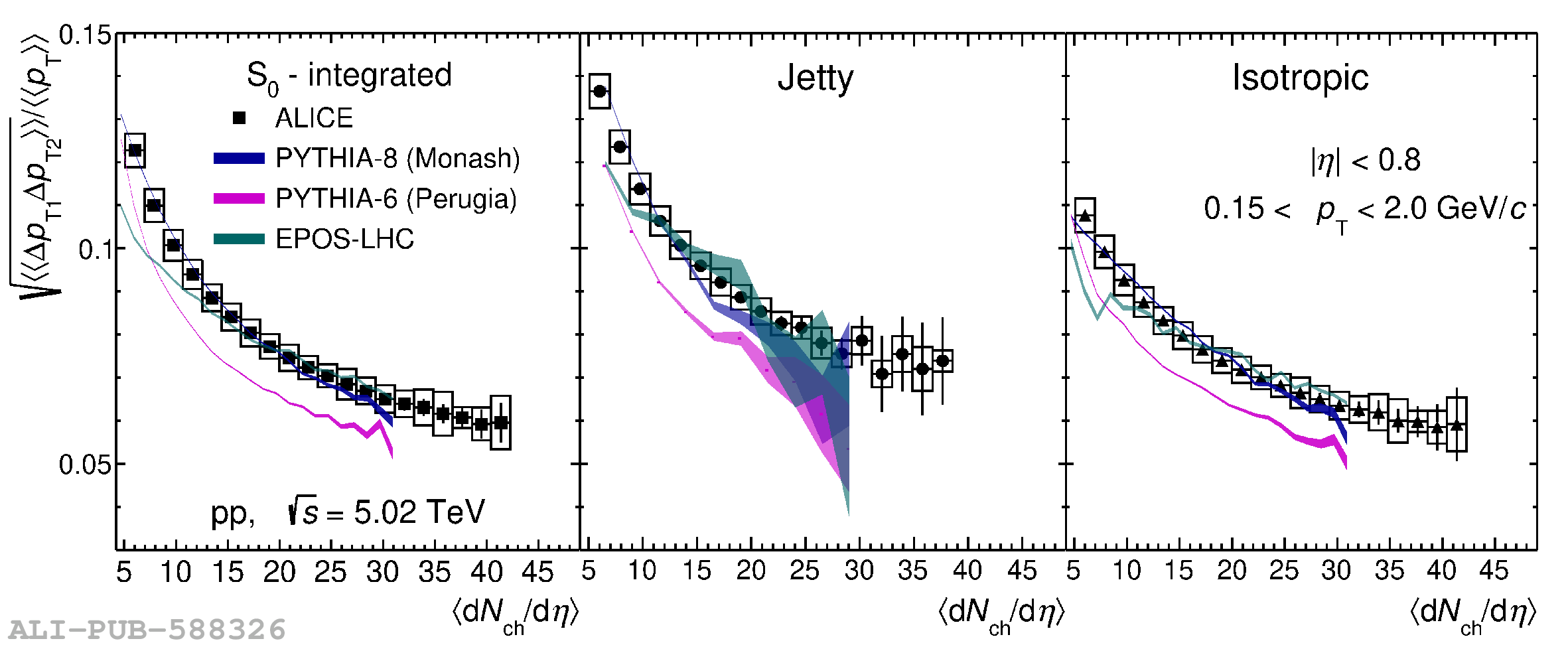Event-by-event fluctuations of the event-wise mean transverse momentum, $\langle p_{\mathrm{T}}\rangle$, of charged particles produced in proton$-$proton (pp) collisions at $\sqrt{s}$ = 5.02 TeV, Xe$-$Xe collisions at $\sqrt{s_{\mathrm{NN}}} =$ 5.44 TeV, and Pb$-$Pb collisions at $\sqrt{s_{\mathrm{NN}}} =$ 5.0 TeV are studied using the ALICE detector based on the integral correlator $\langle\langle \Delta p_{\rm T}\Delta p_{\rm T}\rangle\rangle $. The correlator strength is found to decrease monotonically with increasing produced charged-particle multiplicity measured at midrapidity in all three systems. In Xe$-$Xe and Pb$-$Pb collisions, the multiplicity dependence of the correlator deviates significantly from a simple power-law scaling as well as from the predictions of the HIJING and AMPT models. The observed deviation from power-law scaling is expected from transverse radial flow in semicentral to central Xe$-$Xe and Pb$-$Pb collisions. In pp collisions, the correlation strength is also studied by classifying the events based on the transverse spherocity, $S_0$, of the particle production at midrapidity, used as a proxy for the presence of a pronounced back-to-back jet topology. Low-spherocity (jetty) events feature a larger correlation strength than those with high spherocity (isotropic). The strength and multiplicity dependence of jetty and isotropic events are well reproduced by calculations with the PYTHIA 8 and EPOS LHC models.
Eur. Phys. J. C 85 (2025) 776
HEP Data
e-Print: arXiv:2411.09334 | PDF | inSPIRE
CERN-EP-2024-297
Figure group











